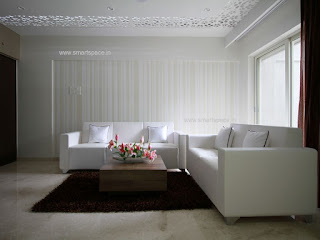Exploring Vernacular Architecture with Pune's Renowned Architects
Architecture of Pune
Pune's old wadas, or traditional houses, are a testament to
the city's rich cultural heritage and architectural history. These wadas are
known for their intricate wooden carvings, spacious courtyards, and beautiful
architecture.
Architecture is a product of the culture that it was
designed for. And architects usually aim to construct spaces for the times and
the people who will use them, becoming inherent problem solvers. They don't
just construct solid and strong buildings. They build ecosystems where, now and
in the future, individuals can gain in numerous ways. All is about the big
picture. Architect Laurie Baker is a Reputed Architect in India who
practices Vernacular Architecture.
The relationship between architecture and culture is one
that has been studied for many years. But what’s happening now is much more
revolutionary. No longer is a static creation that performs well for a while,
the mindset now to build in a way that adapts to a culture’s changing needs.
Climate and Architecture: A fundamental purpose of architecture is to provide
shelter from the elements; that is, to purposefully shape the immediate
physical, as well as social and aesthetic climate in which we live. Most of the
traditional and modern buildings built as vernacular buildings are well lit and
well-ventilated /climate responsive to reduce the use of artificial lighting
and air condition systems. In the present time Villa
Architects in Pune who design Modern Houses inculcate the vernacular
architecture concepts by making use of microclimatic management of making use
of water bodies in forms of canals, pools or fountains etc in open spaces like
the courtyards. This helped to modify the unfavourable climatic impacts of hot
and dry climate. In their Modern Villa
Projects, they Use elements of old buildings which had grills and
fenestration/façade work done to control and manipulate light by means of
strategies like Jalis or double windows with wooden Louvers etc. Many religious
buildings such as mosques or masjids and temples also used similar strategies
to control light and air movement. Though this style of architecture is less
common in modern times, it is still encouraged for long-term construction.
Since the construction industry absorbs a substantial
portion of the world's resources and contributes substantially to global
greenhouse gas emissions, it poses a danger to human survival. Architects, and
town planners will collaborate to construct green buildings, which will help to
promote sustainable growth. Reputed
Architects in Pune and Reputed
Architects in India are currently concentrating on vernacular buildings in
order to make them more energy efficient and sustainable. Even in this age of
rapid technological innovation and urbanization, there is still space for
vernacular tradition to be adopted. It can be used as a blueprint for long-term
growth by integrating historical lessons with modern technology. The study of
local vernacular architecture will assist in developing a green building design
strategy. Indian traditional architecture is well known for combining energy
conservation and sustainability.
